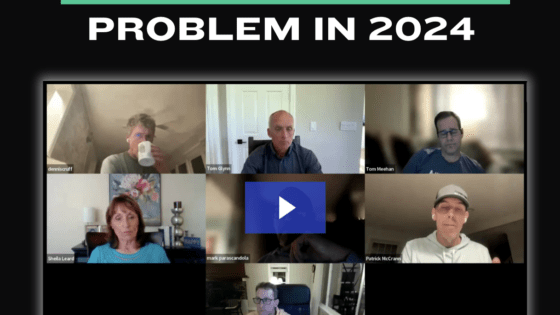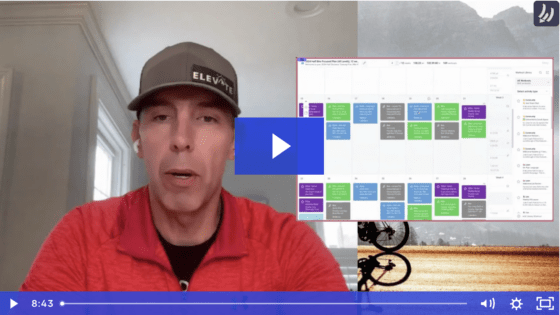Whenever possible we encourage our athletes to add the objective intensity metrics of power and pace to the more common metrics of Rate of Perceived Exertion (RPE) and heart rate.
Why Objective Metrics?
We encourage our athletes to develop the following perspective on fitness, training, and work:
- “Fitness” is your body’s ability to perform work, to propel the mass of your bike and body down the road or through the water at a given speed for a given distance. The more fitness you have the more work you can perform, the functional expression of which is the ability to go faster and/or longer.
- When we focus ourselves on the objective metrics of speed, power, and pace, we are focused on the work that our bodies perform.
- Therefore, by managing the work performed, dialing it up a bit each week, our bodies adapt, and are able to perform more work, to go a little faster and longer.
We drill this down to a very simple concept and slap it on our jerseys and racing singlets:
Keep it simple, focus on the work performed in the time that life gives you, and you will get faster!
Why Develop this Perspective Now, in the OutSeason?
The noise of having to prepare our athletes for specific races has gone away. It’s a very simple time of year and, we’ve found, presents a great opportunity for triathletes to learn new training paradigms and adopt new perspectives.
The Team has come back together and is training with one singular objective:
GET FASTER!
The increased speed, power, and pace they build in the OutSeason® forms the foundation on which we build their FAR, beginning in about February, March, or April.
How Do I Begin to Objectify My Training?
There are two paths to take, Hardware or Software-based. Which one is right for you is most often a function of your budget and tolerance for gadgetry.
Hardware-Based
On the bike you’ll need a powermeter. This is a device that measures your power, or work performed, in real time. Powertap and Quarq are the two systems that our athletes primarily use.
For the run you’ll need a GPS running watch to give you pace in real time as you run. Or a simple watch with a stopwatch and measured course can also serve just fine.
For the swim, all you need is the pace clock that’s probably at the end of the lane or on the wall.
Software-Based
If the hardware above, especially a powermeter, is out of your budget, there are two very good software tools you can use to objectify your training while you squirrel away cash:
- TrainerRoad is a web platform you can use to train with a “virtual powermeter.” TeamEN members enjoy the added benefit of having our OutSeason® cycling workouts available in the TrainerRoad platform.
- Strava is a fun website you can use to objectify your training by creating segments that you do regularly on your local training rides and runs. Your performances on these segments are ranked against each other and the performances of other local athletes, adding a fun social and accountability dynamic to what otherwise might be just another solo training session.
How will Objectifying My Training Help Me on Race Day?
The objective metrics of speed, pace, and power provide an additional lens through which to view the subjective metrics of RPE and heart rate. You’ll find yourself training in three dimensions, as you bounce all of these intensity methods off of each other, and gain a much more detailed understanding of your body.
This increased self-awareness will pay off huge on race day, as our athletes often find themselves better able to identify and solve potential race execution mistakes.





Leave a Reply